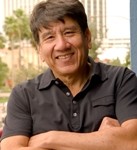
Abigail Alpern Fisch
Arts Leaders and Americans for the Arts Members Getting Out the Vote
Posted by Oct 22, 2020

Abigail Alpern Fisch
As the 2020 election gets closer and many voters are already voting by mail or in-person, arts organizations around the country are doing their part to help voters make their vote count. This election is crucial to electing leaders at each level of government who will ensure that funding for the arts is protected and accessible for all. In this month’s Member Briefing, Americans for the Arts members Sheila Smith, executive director of Minnesota Citizens for the Arts, and Nate McGaha, executive director of Arts North Carolina, discussed using the arts to Get Out the Vote. They shared their experiences conducting voter outreach in their communities including their candidate forums, messaging about important voting deadlines, and partnership with other local, and national organizations including ArtsVote. If you missed the briefing live, a recording of the event is available now on ArtsU. Member Briefings are our quarterly opportunity to talk to you about what’s happening now, so mark your calendars to stay up-to-date on what’s happening at Americans for the Arts and across the sector.
Read More






















 Roberto Bedoya
Roberto Bedoya

 Jen Delos Reyes
Jen Delos Reyes

 Deborah Fisher
Deborah Fisher

 Nato Thompson
Nato Thompson





